“My pulse beat quick –
all nature seemed wrapped in awful suspense – the dart of death hung as it were trembling by a single hair, and no one knew on whose head it would fall.”
– Seaman David C. Bunnell, 1813
Preparing for Battle
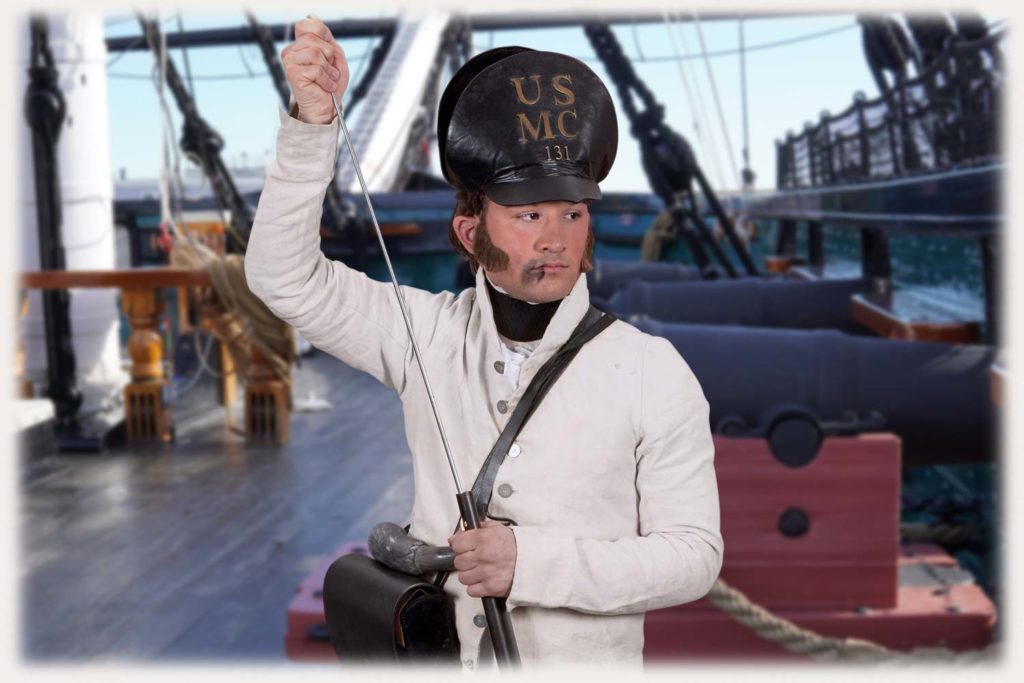
“When we prepare for battle,
the gunner brings up muskets, pistols, cutlasses, and pikes in case we board the enemy or worse, need to defend our own decks. Either way we are fighting for our lives.”
Cannon Lock
Cannon locks like this one were used to fire carronades. When the gun captain yanked on the lock’s lanyard, he tripped the trigger that fired the gun in a split second.
USS Constitution Museum Collection, 1008.36."Day or Night" Telescope
Enemy ships might be spotted first through a telescope like this one, but it may be hours until the ships are close enough for battle.
On loan to the USS Constitution Museum from the U.S. Navy.1795 Springfield Pattern Musket
The Marines hauled muskets like this one up to the fighting tops to prepare for battle.
USS Constitution Museum Collection, 875.1a,b.Battle
Powder Horn
This hollowed-out cattle horn was used to carry gunpowder. Some sailors decorated their powder horns with hand-carved sketches and markings.
USS Constitution Museum Collection, 1008.35.Swivel Howitzer
Short-barreled guns like this were used in the fighting tops. From this high perch, the guns would be fired down on the opposing crew below.
USS Constitution Museum Collection, 975.2a,b.Boarding Axe
The teeth on the back of this boarding axe blade were used to hook ropes or chains, which aided in boarding an enemy vessel.
USS Constitution Museum Collection, 916.4.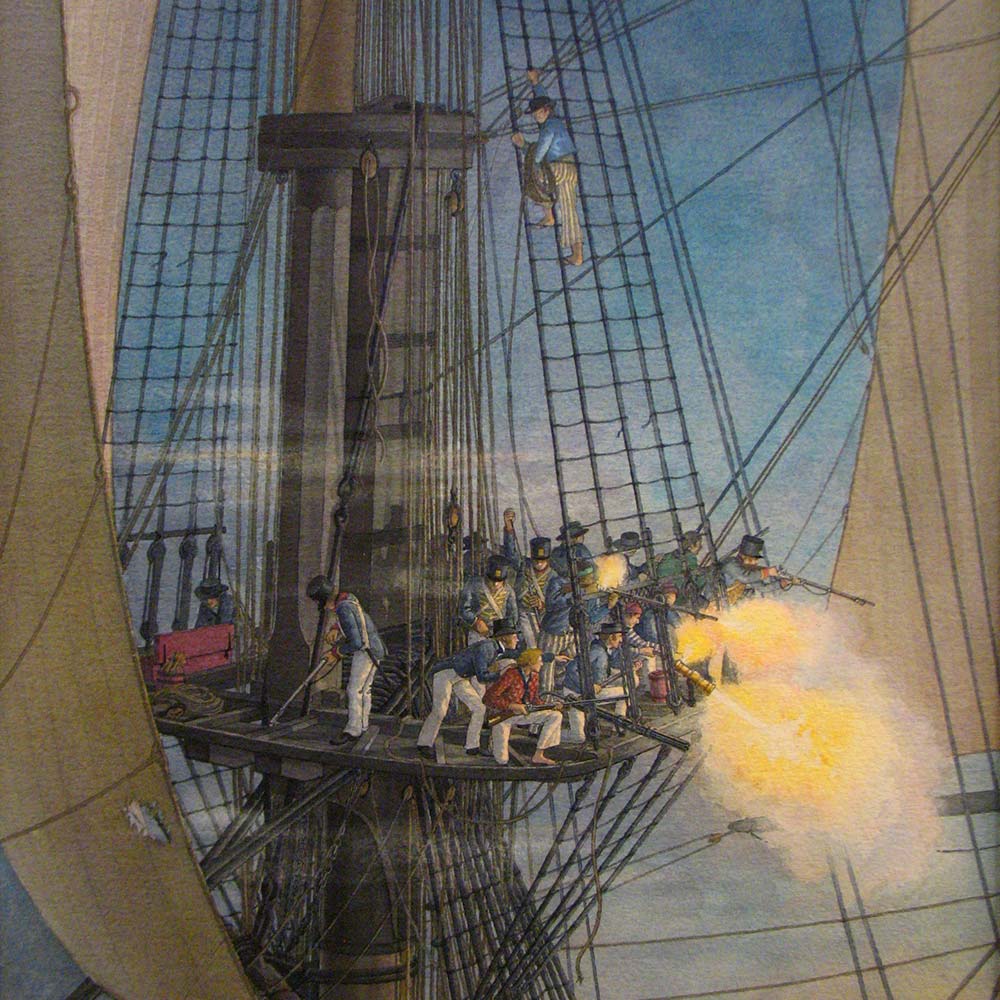
Where are the Marines during battle?
Before battle, Marines carrying muskets and ammunition climbed aloft to their positions on the fighting tops. There they waited for the battle to commence. Once the enemy ship was close enough, they fired their guns down on the enemy crew below.
Cover illustration for Boarders Away II, by William Gilkerson, 1991-1993. USS Constitution Museum Collection, 1414.174.
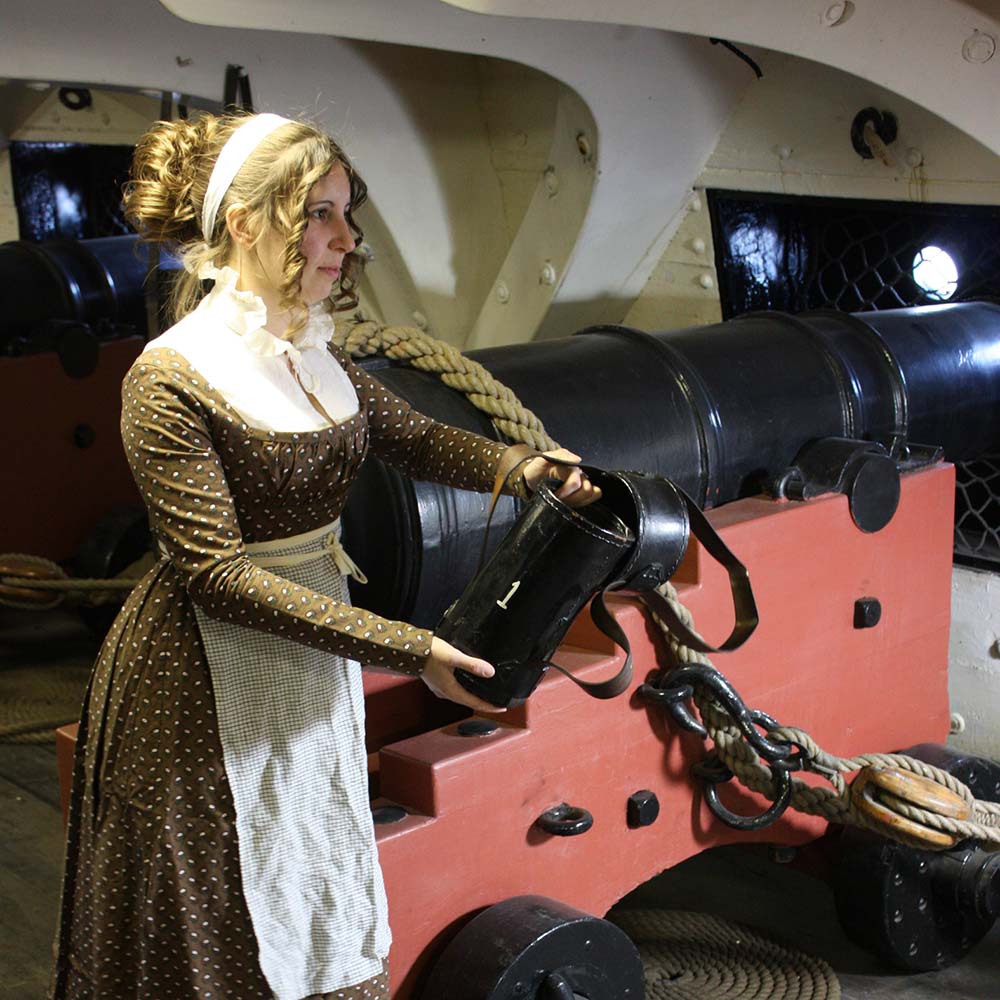
Did women participate in battle?
On board the British ship HMS Guerriere, women helped carry powder to the guns. USS Constitution sailor Moses Smith witnessed this and wrote, “The women they had with them were engaged in passing powder, and other munitions of war. Amid such activity on the decks of the enemy, courage and prudence demanded that we should be active on our own.”
Royal Navy regulations officially forbade women on warships, but it is well documented that many warrant and petty officers took their wives to sea with them. The women on board Guerriere included Mrs. Rutledge, the wife of a gunner; Mrs. Henderson, wife of a boatswain; Mrs. Spry, the wife of a Marine private; and Mrs. Johnson, the wife of the boatswain’s mate.
Aftermath of Battle
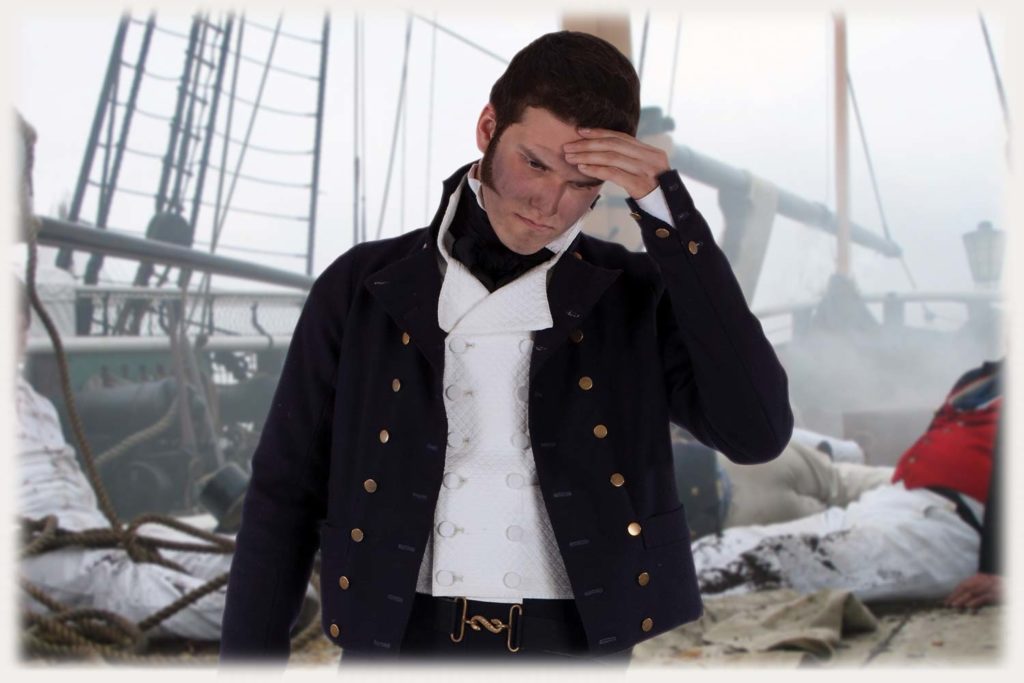
“This being my first action I was ever in,
you can imagine to yourself what were my feelings to hear the horrid groans of the wounded and dying…
The deck of the conquered British Ship “was covered with brains and blood; teeth, pieces of bones, fingers and large pieces of flesh…”
-Midshipman Pardon Mawney Whipple, 1815
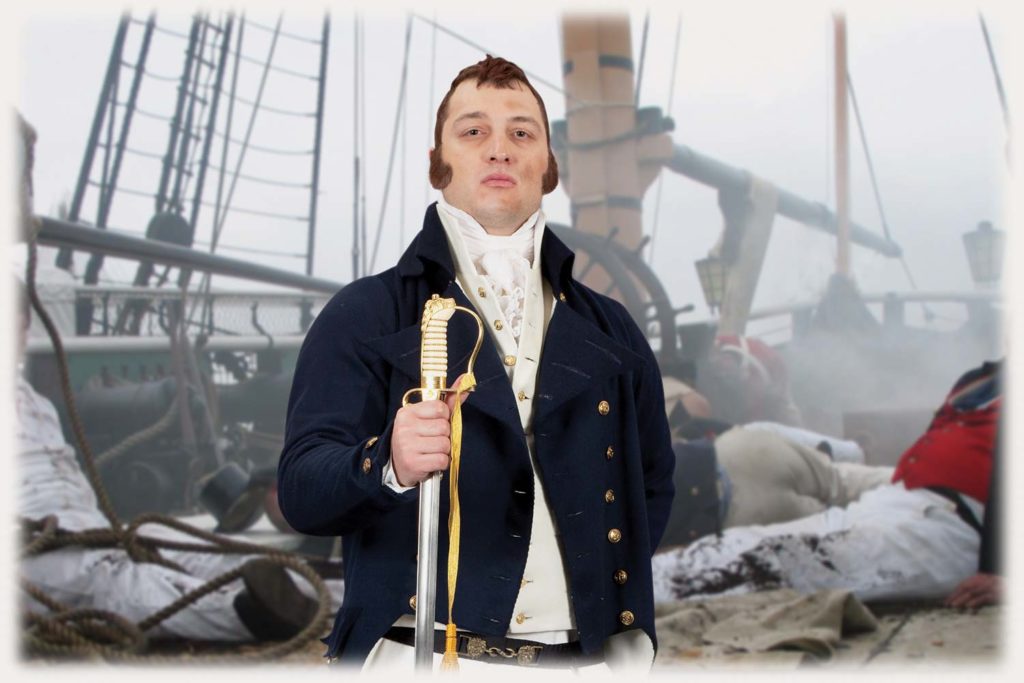
“I feel it my duty …
… to state that the conduct of Captain Hull and his Officers to our Men has been that of a brave Enemy, the greatest care being taken to prevent our Men losing the smallest trifle, the greatest attention being paid to the wounded.”
– Captain James Richard Dacres, HMS Guerriere, September 7, 1812
Lieutenant Beekman V. Hoffman’s Sword
Presentation swords such as this were gifted to officers of elite social and military status, but the swords were more of an accessory and rarely used in battle.
USS Constitution Museum Collection, 1280.1a."Day or Night" Telescope
Enemy ships might be spotted first through a telescope like this one, but it may be hours until the ships are close enough for battle.
On loan to the USS Constitution Museum from the U.S. Navy.1795 Springfield Pattern Musket
The Marines hauled muskets like this one up to the fighting tops to prepare for battle.
USS Constitution Museum Collection, 875.1a,b.